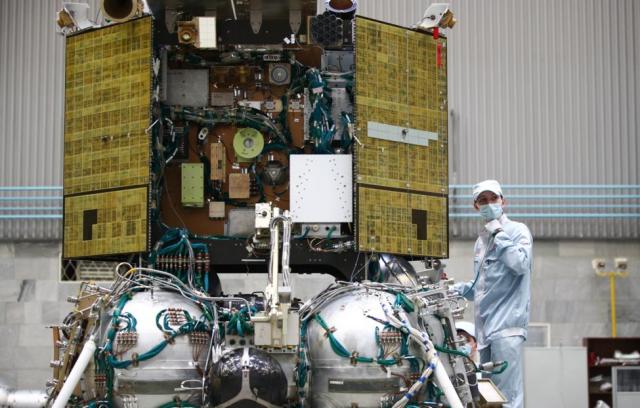On August 20, Roscosmos reported that, according to preliminary data, the Luna-25 automatic station moved into an uncountable orbit and collided with the surface of the Moon
TASS-DOSSIER. August 20, 2023 Roscosmos reported that, according to preliminary data, the Luna-25 automatic station moved into an uncountable orbit and collided with the surface of the Moon. In total, since 2018, 12 space launches have taken place in the world with 18 missions, the purpose of which was to explore the Moon. At the same time, nine missions (including Luna-25) were partially or completely unsuccessful.
Longjiang-1 (China)
On May 25, 2018, a Chinese carrier rocket Long March 4C launched a relay satellite "Queqiao" (from the Chinese "Sorochy Bridge") from the Xichang cosmodrome in the Chinese province of Sichuan. It was successfully brought to the gravitational equilibrium point of the Earth and the Moon L2 (one of the Lagrange points), located at a distance of about 455 thousand km from the Earth and 65 thousand km from the Moon, and then provided in 2019 the operation of the Chang'e-4 spacecraft exploring the far side of the Moon. Two radio astronomy small satellites, Longjiang-1 and Longjiang-2, were launched together with Quqiao. The second of them was successfully launched into lunar orbit and worked for about a year, and the control system on Longjiang-1 failed.
Bereshit (Israel)
On February 22, 2019, the American Falcon 9 launch vehicle launched the Bereshit interplanetary vehicle, developed by the private Israeli company SpaceIL, from the US Air Force Base at Cape Canaveral (Florida). It was a planetoid vehicle that was supposed to move across the surface of the earth's natural satellite by jumping, using rocket engines. On April 11, 2019, Bereshit crashed while landing on the moon. According to SpaceIL, the failure of the onboard acceleration sensor led to the shutdown of the main engine and loss of control over the device.
"Chandrayan-2" (India)
On July 22, 2019, with the help of an LVM3 launch vehicle launched from the Space Center. Indian automatic station "Chandrayan-2" was launched on the island of Sriharikota in the Bay of Bengal. The main purpose of the mission was to deliver the Vikram landing platform with the Pragyan lunar rover to the south Pole area of the Earth satellite. On September 6, 2019, the landing on the Moon of the Vikram module failed: communication with it was lost at an altitude of 2.1 km from the lunar surface.
OMOTENASHI (Japan) and Lunar IceCube (USA)
On November 16, 2022, the United States launched from the Space Center. John F. Kennedy in Florida launched the SLS (Space Launch System) carrier rocket with the Orion spacecraft as part of the Artemis lunar program, which successfully flew around the Moon and returned to Earth on December 11 of the same year. At the same time, two small spacecraft launched together with Orion and intended to study the Moon failed to fulfill their mission. Communication was lost with the Japanese OMOTENASHI lander, which was supposed to work out the technology of a "semi-rigid" landing on the surface, and the American lunar satellite Lunar IceCube, designed to search for water ice.
Hakuto-R (Japan), Rashid (UAE) and Lunar Flashlight (USA)
On December 11, 2022, an international mission was launched from the Cape Canaveral cosmodrome using a Falcon 9 launch vehicle - the Japanese Hakuto-R landing spacecraft with the Rashid planetwalker of the United Arab Emirates (UAE) and the small Japanese SORA-Q robot planetwalker. On April 25, 2023, Hakuto-R accelerated sharply in the last seconds before landing and communication with it was lost. According to experts, the spacecraft made a hard landing on the moon. The mission was deemed unsuccessful. Together with Hakuto-R and two planetary rovers, the small American Lunar Flashlight spacecraft, designed to search for ice on the Moon, was also lost.

